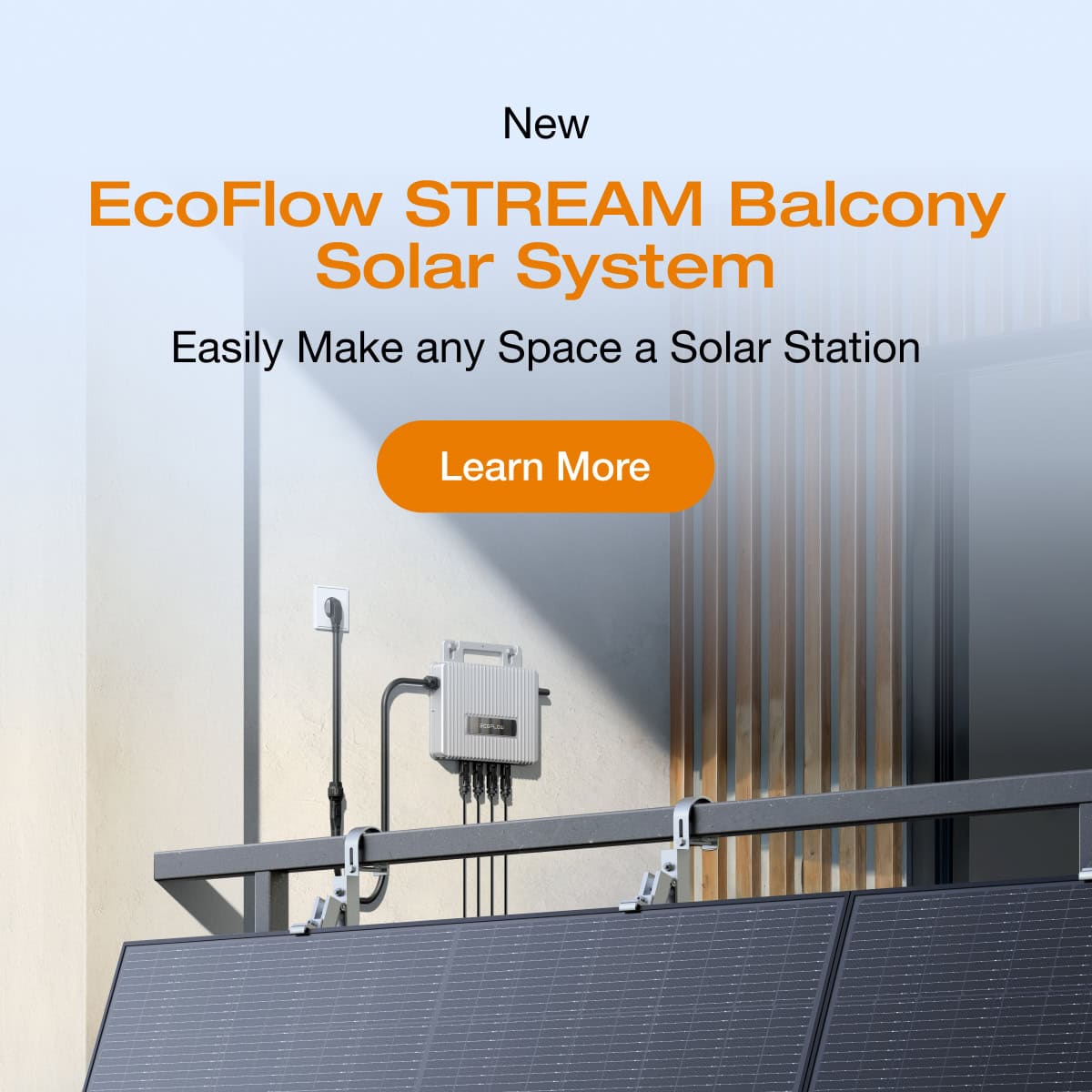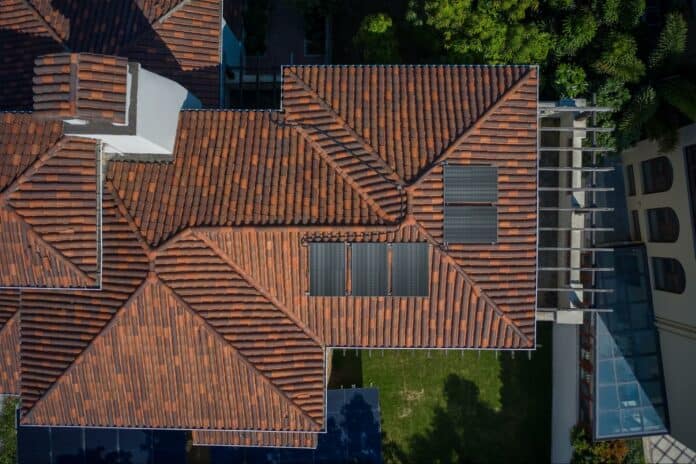Table of Contents
Switching to renewable energy is a no-brainer for the planet.
But if you’re a homeowner, investing in residential solar power isn’t necessarily a no-brainer for your bank account — at least not on the surface.
Look deeper, and you’ll find that switching to solar is an excellent long-term investment.
If you’re worried that switching to renewable solar energy is too expensive, you need to learn about the solar payback period.
After you recoup your initial investment in solar, you can save massively on electricity bills over the long term.
Sounds too good to be true?
Become a believer!
Here’s everything you need to know about the solar payback period.

What Is the Solar Payback Period?
The solar payback period is the amount of time between the initial purchase of a solar power system and when that cost equals (or is less than) what you’ve saved on electricity bills.
For example, if your solar panels and balance of system cost you £5,000 in total, you would need to save £5,000 on your electricity bills before achieving solar payback.
The solar payback calculation is a simplified way to measure the return on investment (ROI) of switching part (or all) of your household’s electricity consumption to a renewable energy generation source instead of on-grid power.
Simply put, the solar payback period is the time before you break even and start making money on your solar investment.
With a grid-tied solar power system, you may actually get paid for the electricity you generate in excess of your consumption. With off-grid solar, you’ll no longer pay the utility company for the electricity you generate.
Money saved is money earned.

What Is the Average Solar Payback Period?
How long your solar payback period will take depends on myriad factors.
However, most homeowners who switch to residential solar power recoup their investment — through savings on reduced or eliminated electricity bills — in 6 to 10 years.
Given the lifespan of a solar panel system is approximately 25 years, committing to the upfront costs carries the promise of up to 2 decades of free electricity.

What Is Considered a Good Solar Payback Period?
It’s well-established that purchasing a residential solar power solution can lead to financial gain in the long run.
But how good of an investment is it in actuality? And compared to more conventional investment vehicles, how does investing in solar stack up?
To figure that out, knowing what industry experts consider a “good” solar payback period is helpful.
One standard is this: If you can pay off your renewable energy equipment in less than half the system’s lifespan, it’s worthwhile.
Experts also suggest considering the IRR, or internal rate of return.
To determine if you’re making a solid financial investment, consider how you would fare if you placed that same amount of money into a different investment vehicle. If the two are comparable or the payoff with solar is greater, you’ve made an excellent choice!
It’s also crucial to consider that the numerous benefits of investing in solar are not as easily quantifiable. Investing in renewable energy can positively impact climate change and help make our planet habitable for future generations.
While hard to put into numbers, it’s difficult to argue that the benefits of reducing your family’s carbon footprint aren’t valuable in the grand scheme.
If you’re unsure where to start with switching, contact a solar provider in your area and ask for an estimate.
Professionals can give you valuable local data you can use to make calculated and informed decisions about investing.
You can also estimate your solar payback period by considering the factors below.

Factors That Impact Your Solar Payback Period
No two households will have the exact same solar payback period. There are simply too many variables at play.
Here are some of the most common factors impacting your payback period.
Once you understand the impact of these elements, you can devise ways to speed up your payback period and start saving money faster.
Total Cost of System and Equipment
The most significant factor that impacts the length of your solar payback period is the cost of your home renewable energy system. Cost is dependent on a variety of factors.
For example, if you live in a two-story five-bedroom house with six people, you require much more electricity to power your home than living alone in a tiny home. The more electricity it takes to power your lifestyle, the more equipment you require.
The flip side is that the more electricity you currently pay for — the more significant the potential long-term savings.
The total cost of a residential solar power system includes the solar panels, installation, and the balance of system.
Balance of system (BOS) components are required to convert and store the solar energy gathered by PV panels as usable AC (household) electricity.
Required BOS components include:
- Inverter
- Solar Battery
- Charge Controller
- Battery Management System
- Wiring and cabling
You can choose to build a DIY solar power system using these (and additional) components.
Or you can avoid the hassle (and potential compatibility issues) by purchasing a portable power station (PPS). A PPS that supports solar charging from PV panels typically has all the BOS components built-in.
Government Tax Breaks and Incentives
Thanks to the global imperative of achieving a net-zero future, federal and local governments worldwide are offering generous incentives for switching to solar power.
The more money you can save on your initial solar power system purchase, the shorter your solar payback period!
Residential solar solutions like EcoFlow’s Smart Home Ecosystem can qualify for significant tax breaks.
One recent government incentive was the 130% Super-Deduction, which was introduced in 2021 and ran from 1 April 2021 to 1 April 2023. This two-year program allowed businesses to deduct 130% of their solar equipment and installation costs from their taxable profits. Essentially, for every pound a company invested into solar energy, they could reduce their tax bill by 25p.
In the Spring 2023 Budget, the Chancellor announced that a “Full Expensing” and 50% First Year Allowances (FYA) program would replace the Super Deduction and run from 1 April 2023 to 31 March 2026. Under this new scheme, special rate expenditures, including solar panels, qualify for 50% of first-year relief.
For example, if a company spends £20,000 installing a solar photovoltaic system, they can claim £10,000 under the 50% first-year allowance the year they incur the expense.
Current government incentives available to homeowners include the Energy Company Obligation (ECO4) scheme, which the government designed to encourage clean energy and improve the energy ratings of UK homes to reduce carbon emissions. This scheme is available to low-income or fuel-poor households that meet the following requirements:
- Currently has an inefficient heating system
- Own and live in the home, or live in private rented accommodation
- Receiving government benefits
- All-electric homes where District Heat Network and biomass boilers have been ruled out
Those who qualify may be eligible to save up to 100% of the cost of a solar energy system.
Other government incentives include:
- Home Upgrade Grant, available for homes that are low-income, off the gas grid, with EPC between D and G, and who live in one of the local authority areas
- 0% VAT, which reduces the VAT on renewables such as solar panels from 5% to 0%, helping families save more than £1,000 on installation and £300 annually on electricity bills.
Government credits and incentives can significantly reduce the cost of your residential solar power system. The lower the upfront investment, the faster the solar payback period.
Thoroughly research what programs you qualify for in your location to maximise your savings and shorten your solar payback period.
Average Recurring Electricity Cost
While there will always be variation month-to-month, you can typically anticipate how much electricity your household consumes at different times of the year.
Consumption levels are significantly affected by weather patterns (especially winter vs summer) and lifestyle habits. Identifying your average expected electricity costs is essential to estimating your solar payback period.
Even more crucially, you must determine your total electricity consumption to purchase a solar power system that meets your household needs.
The more electricity you consume, the more electricity your solar panel array and balance of system must generate.
If your electricity needs are substantial, you’ll have to spend more money upfront on equipment. However, the additional investment also means you’ll save even more money every month on your electricity bill.
Cost of Electricity in Your Area
The cost of electricity in your region also has a substantial impact on your solar payback period.
Electricity costs widely vary from place to place due to regulations, transportation and transmission procedures, and the cost of running a power plant. Your local energy prices can directly affect your return on investment.
The higher your electricity costs per kilowatt-hour (kWh), the more money you’ll save month-to-month by switching to solar.
While it may seem counterintuitive, the higher your electricity bills — the shorter your solar payback period and the greater your potential return on investment.
Estimated Electricity Generation
The amount of electricity your residential solar power system generates also substantially influences your solar payback period.
Generating enough electricity to eliminate your electricity bills in full is the goal for most residential home solar system users…
However, not everyone can achieve it.
Myriad factors influence the amount of electricity your solar panels and balance of system can produce.
One essential consideration is totally out of your control: the number of peak sunlight hours your location receives.
If you live in an area with ample sunshine year-round, — you can likely harvest all the solar energy you need to make electricity bills a thing of the past.
But if you live in a region with minimal sunshine and lots of cloudy days, sufficient electricity generation isn’t guaranteed.
Additionally, if your rooftop has substantial shade from overhanging trees or nearby buildings, affected panels won’t operate at their optimal capacity. The more sunlight you capture, the more money you save.
Other Financial Incentives
In some places, you can benefit from RECs, or renewable energy credits, which can further minimise your payback period. Similar to RECs, the UK had Renewables Obligation Certificates (ROCs) available up until 1 April 2017, but they are now replaced by the Contract for Difference (CfD) scheme, which provides low-carbon electricity generators with fixed revenue payments as the basis to help finance capital-intensive investments in low-carbon technology such as solar powered energy systems.
Net metering is another option in some areas for selling excess electricity back to the grid. Any home solar installation that creates less than 5MW of power in the UK is eligible for net metering credits through its Smart Export Guarantee (SEG) program. To qualify for SEG, you’ll need a microgeneration certificate (MCS certificate) from your home solar installer and find an SEG licensee to handle your account. Luckily, most energy suppliers are SEG licensees.
It’s crucial to note that these options are only available for grid-tied solar power systems.
Off-grid systems offer you complete energy independence — but you can’t send electricity back to the grid. Instead, you can save any additional energy you generate in solar batteries and use it on demand.
The net result is the same whether your system is grid-tied or off-grid — the more electricity you generate, the more money you’ll save on utility bills.
If you generate significantly more electricity than you consume, grid-tied buyback programs can potentially reduce your solar payback period.

How To Calculate Your Solar Payback Period: A Quick Guide
You don’t need to be a math whiz to estimate your solar payback period. You only need the right data and a few moments to crunch the numbers.
Let’s walk you through the steps.
Calculate the Total System Cost
To start, you’ll need the total cost of your energy equipment. The total includes any installation fees and related expenses in addition to the solar panel array and balance of system.
If you haven’t yet purchased your home solar system, you can contact a reputable local solar power company for a quote.
Alternatively, you can often save a substantial amount of money by purchasing an easy-to-install, plug-and-play solar solution from a manufacturer like EcoFlow.
Factor in Credits, Rebates, and Incentives
Next, factor in any available solar incentives.
Savings can be in the form of government tax credits, rebates, or installer discounts. Subtract the total expected savings from the total cost of the system. To get the most accurate calculation, research local opportunities before making a purchase:
Gross Cost of System – System Savings = Net Cost of System
Include any potential CfDs, grants, income, or money earned back from various government programs for grid-tied systems.
Add in any Additional Costs, like Financing Fees
Not everyone can afford to buy their solar panels and equipment outright. Most solar installers and manufacturers provide options to finance your system and pay it back over time.
If you finance, this will likely influence your payback period. Consider any additional fees or interest that will accrue while you pay off your equipment.
Financing shouldn’t disqualify you from government incentives or programs, but be sure to read the fine print with the lender. However, if you wish to install a solar energy system in your home, you should first check to see if you qualify for a Green Deal finance plan from an approved Green Deal provider.
Calculate Your Estimated Monthly Electricity Cost
Identify how much you typically spend on electricity. Reputable solar installers will do their best to design a system that produces the energy you need.
Additionally, having a solid understanding of your monthly electricity consumption empowers you to purchase a solar power solution without paying an installation company commission.
In an ideal world, with the right residential solar system, you won’t have an electricity bill at all post-installation.
Calculate how much you typically spend to identify how much you’ll save on utility bills monthly. Many utility companies list your annual consumption on your statement. Or you can simply add up your previous 12 bills to determine your yearly electricity costs.
Depending on fuel costs and numerous other factors you can’t predict, electricity costs vary over time. But using an average cost is sufficient for estimating your solar payback period.
Divide the Total Cost of the System by the Annual Financial Benefit
All that’s left to do now is some basic math.
To determine your solar payback period, divide the system’s total cost (factoring in any fees or savings) by the expected annual financial benefit (the pound amount you’ll save each year by not having an electricity bill).
The result is the expected amount of time required, in years, before you realise a return on investment from your home solar equipment.
For example, say you spend £5,000 on your equipment, and your typical annual electricity cost is £1,000. To determine your payback period, divide £5,000 by £1,00.
£5,000 / £1,000 = 5 years
This calculation shows that your solar payback period is approximately five years. Because a typical home solar system lasts at least 25 years, you’ll get 20+ years of electricity savings.
Using the example above, that’s more than £22,500 in savings during the equipment’s lifespan.
The potential savings show that solar power can be an excellent investment for the planet and your pocketbook.

FAQs
While the answer isn’t entirely so black and white, yes, your investment in solar panels will pay for itself in the long run. Upfront costs may be steep, but the long-term savings over the panels’ lifespan is significant and should provide a healthy return on investment.
It depends. Ultimately, your estimated electricity savings depends on how much electricity you produce and how much you consume. You’ll have an electricity bill if you consume more power than your panels generate. Even if you don’t go 100% solar, you can still achieve substantial savings by reducing the amount of electricity you consume. With a smart home ecosystem, you can schedule your solar power system to supply electricity during peak times with higher per kWh charges.
Data suggests that the average user saves between £21,250 and £40,325 over the lifespan of their solar panels. While the exact number depends on the cost of electricity in your area, the savings are astronomical no matter where you live!

Conclusion
When it comes to any significant financial decision, knowledge is power.
The better you understand your solar payback period, the better you can anticipate and set your family up for a bright financial future.
Investing in solar technology goes one step further by supporting a world with fewer climate catastrophes and more thriving ecosystems.
It’s a total win-win.
When you’re ready to switch, EcoFlow has industry-leading off-grid solar power solutions at competitive prices to make your renewable energy dreams come true.
Whether you’re looking for an on-the-go solution like the portable DELTA 2 or a Smart Home Ecosystem, EcoFlow has you covered.
Flip the solar switch today!







